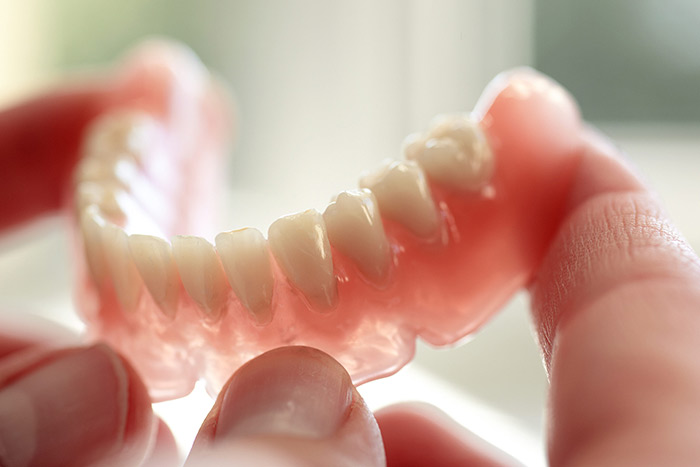Dentures are removable prosthetic supplements which the patient himself inserts and removes from the mouth for hygienic purposes.
We distinguish the following dentures:
- Full dentures (where all teeth are missing from the jaw)
- Partial dentures (where one or more teeth are missing)
Dentures provide the ability to maintain the relationship of the jawline, prevent diseases of temporomandibular joints, ensure preservation of the original appearance of the patient’s face, and allow normal speech, chewing and swallowing.

Full dentures are the most common solution when the jaw is entirely toothless, since they make up for all of the teeth as well as for a part of the alveolar ridge. Full dentures are made of acrylic. Dentures are placed over the gums and the upper and lower jawbone. Construction of full dentures drastically improves quality of life of the toothless patients, both in aesthetic and functional regard. Still, blocking of the palate can affect the sense of taste, and since this denture is not fixed it can move, particularly in the lower jawbone, so it requires a long period of adaptation.
When a larger number of teeth are missing, and implementation of a bridge is not possible, partial dentures are the appropriate solution. Partial dentures are secured with the help of small metal pins that are attached to the patient’s remaining natural teeth. Although the result is stable, partial dentures do not provide the most aesthetically pleasing outcome due to the fact that in some cases, the metal extensions are visible. Additionally, the adaptation period is longer because the contact points (teeth fixtures) may blister and cause a sense of discomfort.




